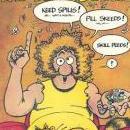Paint advice..... what kind/brand for external paint job and how-to hints tips welcome too.
-
Recently Browsing 0 members
- No registered users viewing this page.
-
Latest Posts
-
- 31,537 replies
- 1,496,394 views
-
- 8 replies
- 108 views
-
- 14 replies
- 115 views
-
- 339 replies
- 25,210 views
-
- 0 replies
- 75 views
-




Recommended Posts
Join the conversation
You can post now and register later. If you have an account, sign in now to post with your account.